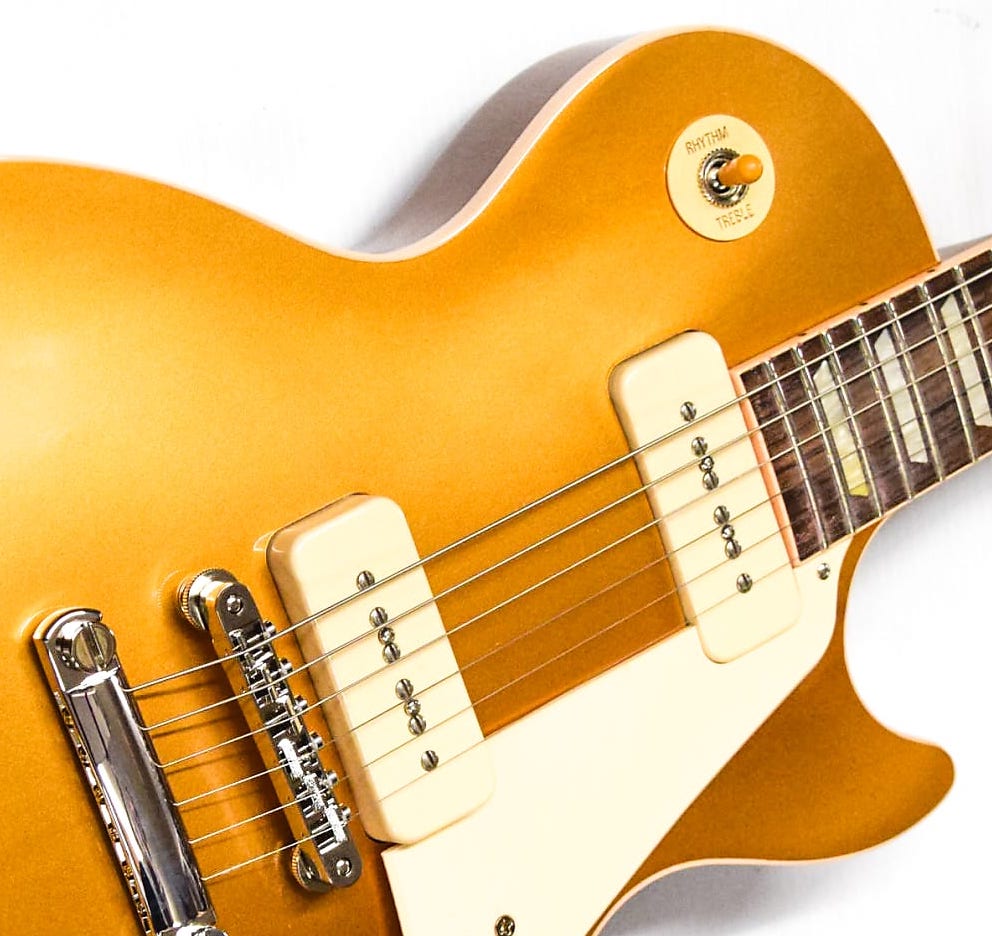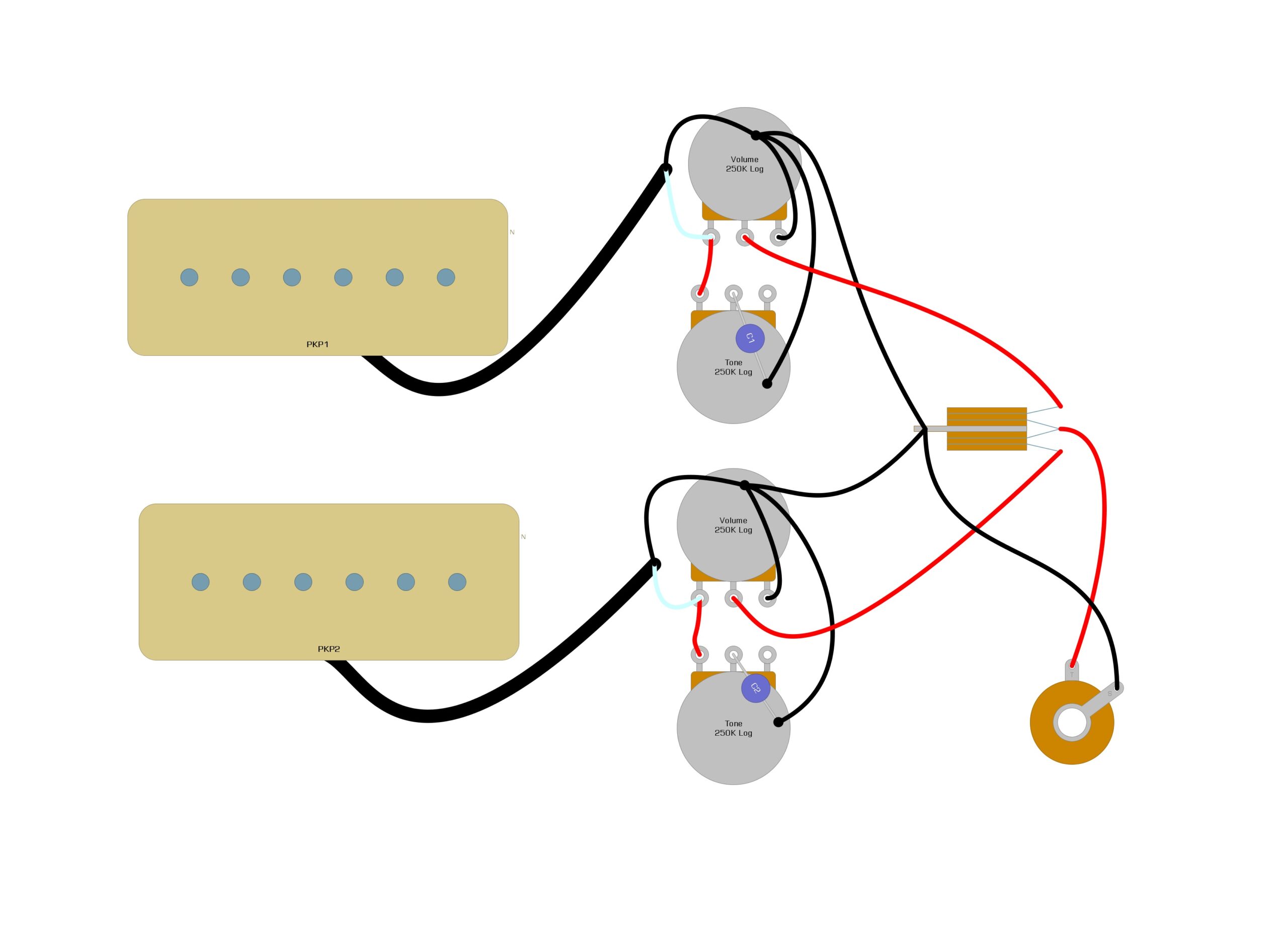
By Ed Malaker
Posted 08/18/2020
The Gibson Les Paul is one of the most famous and well-known guitars, and naturally, some of the most famous guitarists use them — Jimmy Page, Slash, and Billy Gibbons to name a few. The P90 pickup is the Gibson version of a single-coil, and it’s used commonly in Les Pauls. Like all single-coils, it’s subject to some extra noise, but because of its design, it sounds a little warmer than its Fender counterpart. In this coverage of the Les Paul P90 wiring, we’ll begin with the code, take a look at a typical diagram, then review the required components.
Gibson Les Paul P90 Wiring Code
Because the P90 is a single-coil, it should only have two wires. There are some modern versions of the P90 that feature hum-canceling properties, so if you’re using one of those, just use a humbucker wiring diagram to install it into your guitar.
To find the Hot and Ground wires, check your pickup documentation. If you don’t have documentation or know the exact brand, you will need to use a multimeter. Since there are only two wires, you stand a good chance of guessing the Hot and Ground, if you have no other method. Your tone will be slightly hollow-sounding if the pickup selector is in the center position and the wiring is backward.
Gibson Les Paul Wiring Diagram
In Example 1, we’ll take a look at the typical Les Paul P90 Wiring Diagram.
Example 1
If you look at the third lug of both volume controls, you might notice the Ground wire going to the back of the pot. Most people bend the jug and solder it to the back without using a wire. You can use either method.
Required Components
Here is a list of the components you might need besides the pickups:
- 4 Volume and Tone controls are 500k pots. In the early days, Gibson used a 250k pot for the volume and a 500k for the tone. Modern guitars use two 500k pots. If you feel the guitar is too bright, you can warm it up some by using 250k pots. We recommend starting with audio taper pots, but many people like to use linear taper in the tone control. You may want to experiment after you get it running.
- You will need a three-way toggle switch but not necessarily the Gibson three-way toggle. Any 3-way switch with three tabs on one side and a ground on the other should work as long as it fits in the hole.
- Most older Les Pauls used a .047uf capacitor on each tone control (two total). A more common modern value is the .022uf capacitor. You may want to experiment by going even lower, to .01uf, as some people feel it gives a broader tone control range.
- The output jack should be the last thing you need, to get the guitar running.
NOTE: The links are only to show you how the components look.

